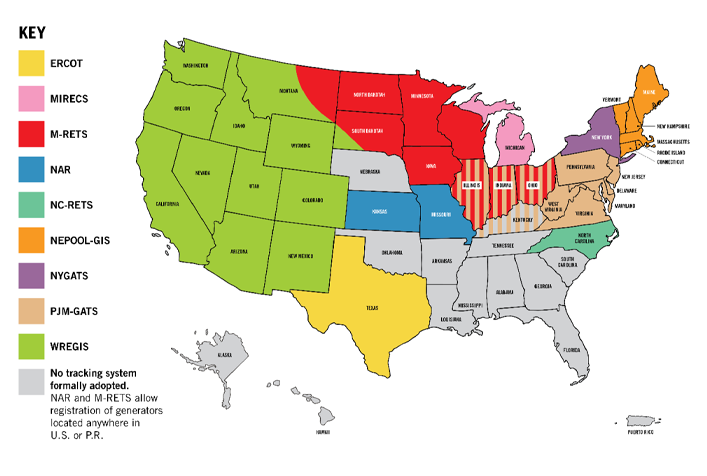Assessing and Enhancing U.S. Energy Attribute Tracking Systems

Project Brief
The Challenge
Energy attribute tracking systems are digital web-accessible platforms that register basic information about each unit of electricity generation in a specific geographic region. These systems are essential to the functioning of the U.S. renewable electricity market. The nine existing systems together provide nationwide coverage, verifying compliance with state renewable portfolio standards, supporting power source and emissions disclosures for consumers, and establishing credibility and ownership rights for market participants trading energy attribute certificates (EACs). However, as energy policies and procurement strategies evolve, the current capabilities of these systems may not fully meet emerging market needs.
ERG's Solution
To address this challenge, the U.S. Environmental Protection Agency (EPA) engaged ERG to assess and compare the characteristics and capabilities of the nine tracking systems. ERG conducted extensive research, collected and analyzed data, and convened stakeholder meetings with tracking system representatives. These efforts culminated in a comprehensive 57-page report, Status and Trends Report on U.S. Energy Attribute Tracking Systems, published by EPA. The report provides an overview of the nine operational systems responsible for issuing EACs and managing their transfer and ownership until retirement or claim. It begins with a foundational explanation of energy attribute tracking systems, including their purpose, how they operate, and key similarities and differences. It then explores current trends in U.S. energy markets that are driving system evolution, including the growing need for hourly matching and other advanced capabilities. The report concludes by highlighting the critical role these systems play in supporting credible energy markets and outlines opportunities for further coordination and improvement, such as enhancing system interoperability by harmonizing definitions, procedures, and certificate formats across registries, and developing capabilities for time- and location-specific matching of energy use and generation.
Client
U.S. Environmental Protection Agency